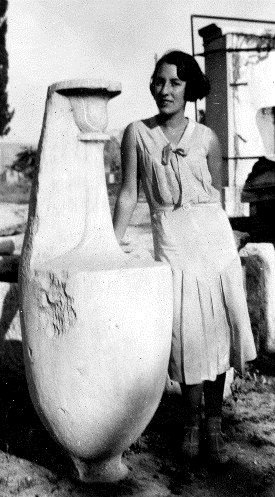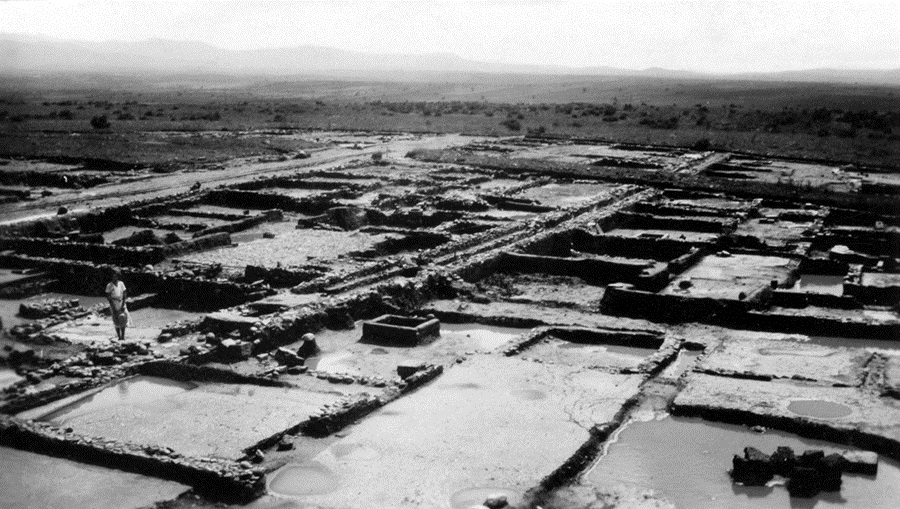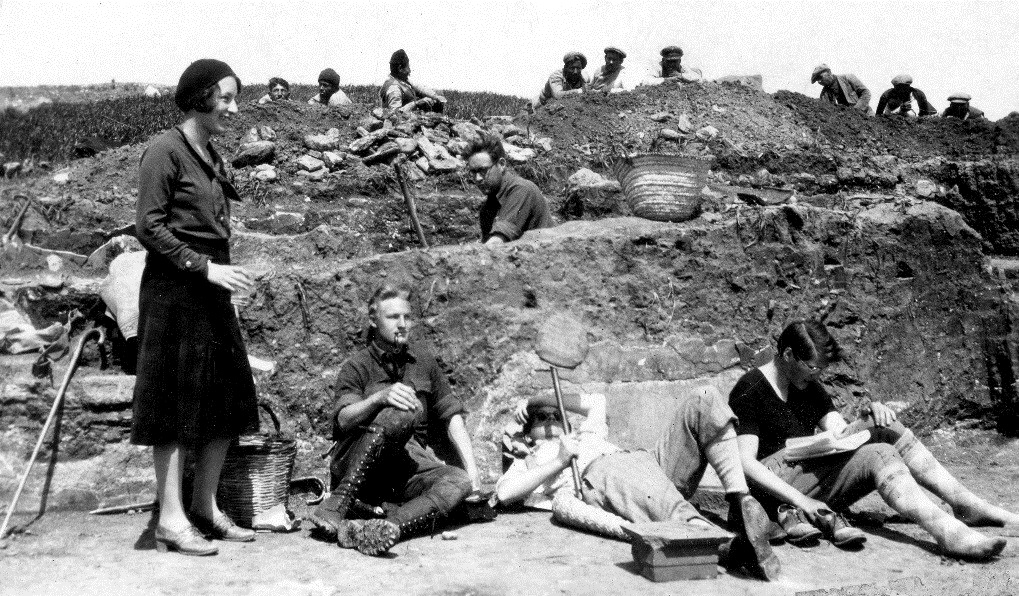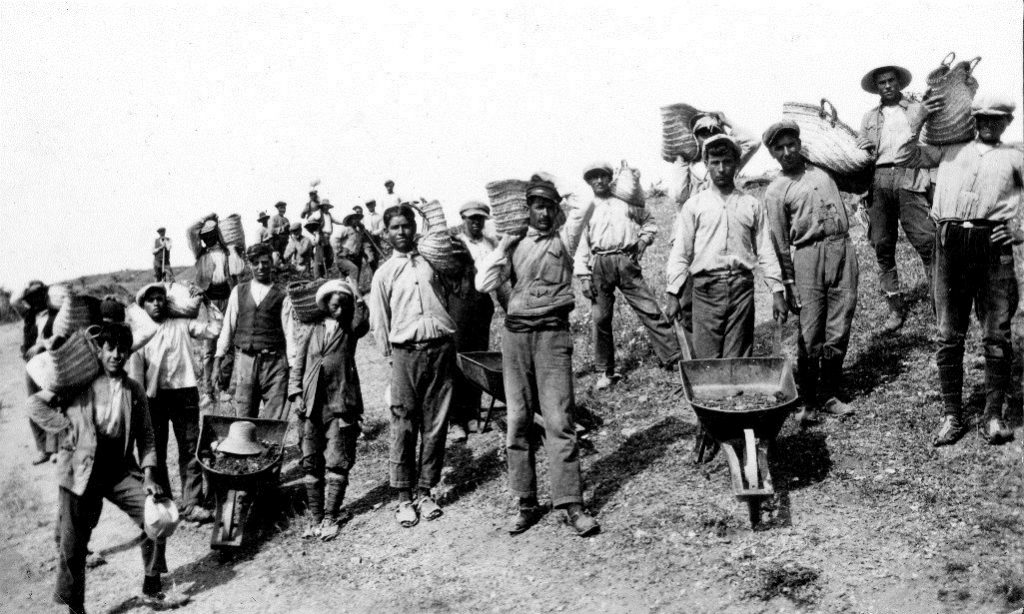When retired University of Evansville professor Mary Ellingson passed away in 1993, people remembered her as a much-beloved teacher, a mother, and a friend. Few knew she had played one other role as an archaeologist working on one of the most important excavations in Greece between the World Wars (Fig. 1). While Ellingson told few people about her adventures abroad she did make a scrapbook filled with nearly 100 photographs, many letters, some news clippings, and other papers all of which documented her time as an archaeologist. After her death, Ellingson’s daughter donated the scrapbook to the Department of Archaeology and Art History at the University of Evansville where I stumbled across it a decade later. I never met Ellingson, but I got to know her through the scrapbook. In that scrapbook I found clues she had left to an even more surprising secret she had kept from everyone.

Ellingson wanted to become a classical archaeologist. According to a biographical statement attached to her dissertation, she was born H. M. Mary Ross and received her BA in classics from the University of Alberta. In 1930 she went to Baltimore to attend graduate school at Johns Hopkins University. What drew her there was David Moore Robinson, a well-known expert in the field. Only two years earlier Robinson had begun a new project, the one that would cement his reputation as one of the great classical archaeologists. According to Nicholas Cahill in his book Household and City Organization at Olynthus, Robinson began excavating houses at the site of Olynthus in northeastern Greece, a revolutionary idea at the time as archaeologists interested in ancient Greece normally sought temples, theaters, and other public architecture (Fig. 2). Over the 24 years he published the results of his excavations, Robinson convinced his colleagues that houses could provide them with important information about daily life among the ancient Greeks. His 14 volume Excavations at Olynthus published between 1928 and 1952 is still considered the cornerstone of ancient Greek domestic studies and as a graduate student and aspiring archaeologist I had to read every volume. Ellingson could not have had a better guide than Robinson to help her enter the field.

The normal practice at the time was for male graduate students to supervise Greek workmen excavating in the field while female graduate students cleaned and catalogued finds in the dig house, a practice Robinson followed at Olynthus in 1928 according to Raymond Dessy, author of Exile from Olynthus. Ellingson’s letters make it clear that when she went to Olynthus in 1931, Robinson decided to experiment with not dividing these tasks along gendered lines and instead had all of the students both supervise workmen and catalog finds (Fig. 3). Ellingson’s abilities in the field quickly impressed Robinson. In a letter dated March 15, 1939 now housed in the archives at the University of Evansville Robinson states that Ellingson, “…showed remarkable executive ability and was able to superintend the Greek workmen in a very efficient way, a thing that is very unusual for a woman and which quite surprised the Greeks themselves.” He added, “She is an excellent field archaeologist.” (Fig. 4)


Robinson divided the artifacts by category and put one graduate student in charge of cataloguing pottery, another coins, another metal objects, while he assigned Ellingson terracotta figurines (Fig. 5). These artifacts stood 6-12 inches tall and depict deities, animals, and theater masks as well as standing, sitting, and dancing women. Ellingson eventually wrote her master’s thesis and dissertation about these figurines. The big question of the day was how the ancient Greeks used these figurines. It was widely assumed they had only religious significance since excavators found them only in temples and graves. When Robinson published Excavations at Olynthus volume IV on the figurines he had excavated in 1928, other archaeologists were curious to know if he had found them in houses. His records from that season were so poorly kept that he could not explain where he had uncovered each of the figurines he catalogued in the volume. In 1931 respected archaeologists published scathing reviews of Robinson’s work, among them Edith Dohan, publishing in the American Journal of Archaeology, Alan Wace in Classical Review, and Winifred Lamb in the Journal of Hellenic Studies. All pilloried Robinson for poor record-keeping and a missed opportunity to weigh in on a central question.

This is what makes Ellingson’s thesis and dissertation so significant. She not only catalogued the figurines but she offered interpretations of their use. She found some of the figurines on household shrines, indicating a religious function, but others she uncovered had once been suspended from walls or placed on display, suggesting a decorative function. She also excavated figurines made from the same mold in houses and in graves indicating that their use changed over the lifetime of the figurine. Finally, Ellingson realized that when she found animal figurines in graves, those graves belonged only to children. She argued they had no religious or decorative function; they were toys. These were radical and exciting new interpretations for their day.
After her season at Olynthus, Ellingson returned to Johns Hopkins to write her master’s thesis. In her free time she made the scrapbook commemorating her time at the excavation. Johns Hopkins awarded her a PhD in classical archaeology in 1939. According to Ellingson’s daughter Barbara Petersen, a few months later she married Rudolph Ellingson and moved to Evansville where he had found a job. She raised two daughters and once they left for college in the early 1960s the University of Evansville hired Ellingson to teach Latin, Greek, and English courses. She retired in 1974 and upon her death in 1993 her daughter donated the scrapbook to my department where someone put it on a storage shelf and everyone forgot about it. A decade later I rediscovered it. It now resides in the university’s archives.
Along with the scrapbook was a copy of Ellingson’s thesis and dissertation. As soon as I started to read these, I recognized them immediately even though I had never heard of Ellingson. On a hunch I consulted Excavations at Olynthus volumes VII sand XIV. These are the only two volumes other than IV which mention terracotta figurines. I placed her thesis and Olynthus VII side by side and began to read. The texts were identical. The same was true for her dissertation and Olynthus XIV, yet Robinson put his name on the cover page of each as the sole author. He did thank Ellingson in a general way in the introduction to each volume but in no way did he indicate that Ellingson was the actual author. Robinson plagiarized his graduate student Ellingson. We cannot know why he did it, but I suspect it was because what she wrote about terracotta figurines was so much better than what he had written in volume IV. Scholars such as Valentin Müller agreed, praising volume VII in particular in his 1936 review in Classical Philology.
We cannot know how Ellingson reacted to Robinson’s publication of her thesis, no record remains, but among Robinson’s papers now housed in the archive at the University of Mississippi is a letter dated Oct. 6, 1952 which Ellingson sent to him expressing her surprise and discovering her dissertation in print. The archive preserves a copy of his response, sent a week later, in which he states that he “…probably should have given you more credit.” It was the closest thing to an apology Ellingson would ever receive. She only told one of her daughters once about what happened to her, otherwise she shared the story with no one.
The description above is only a very brief summary of Ellingson’s story. To learn more, see For Further Reading below. Nonetheless her story matters because she left behind enough documentation to tell it. Other women in archaeology and the sciences did not receive the credit they deserve for their work, but we may never hear about them as they did not make a scrapbook as evidence of their accomplishments. Mary Ellingson, therefore, must stand as a proxy for other women about whom we will never learn.
For Further Reading:
Kaiser, A. 2015. Archaeology, Sexism, and Scandal. The Long-Suppressed Story of One Woman’s Discoveries and the Man Who Took Credit for Them. Rowman and Littlefield: Lanham, Maryland.
